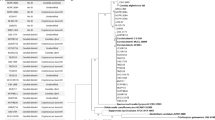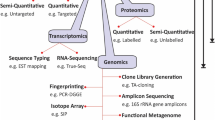Abstract
Trichophyton, important among the three keratinophylic fungi grouped as dermatophytes, is known to cause superficial infections in skin, nail and hair of all the living organisms. The side effects produced by the drugs currently administered to counter these infections have necessitated the search for novel targets. The present study focused on finding putative drug targets in Trichophyton rubrum using the subtractive proteomics approach where its whole proteome was analyzed to find proteins non-homologous to humans inclusive of their gut flora and human protein domain but essential to T. rubrum, to identify sub-cellular localization, functional classification of uncharacterized proteins and to analyze the protein network, druggability and pathway of the targets. The study’s strength relies on its addition of important steps namely, non-homology of the pathogen domain to human domain, non-homology to gut microbiota and substantiation of the importance of the targets in networking by node deletion to the existing methods in drug discovery for dermatophytoses. The study has resulted in the identification of two novel drug targets from the whole proteome of T. rubrum that are not present in human and human gut microbiota.



Similar content being viewed by others
References
Moriarty B, Hay R, Morris-Jones R (2012) The diagnosis and management of tinea. Br Med J 345(7865):37–42. https://doi.org/10.1136/bmj.e4380
Jain A, Jain S, Rawat S (2010) Emerging fungal infections among children: a review on its clinical manifestations, diagnosis, and prevention. J Pharm Bioallied Sci 2(4):314–320. https://doi.org/10.4103/0975-7406.72131
Blutfield MS, Lohre JM, Pawich DA, Vlahovic TC (2015) The immunologic response to Trichophyton rubrum in lower extremity fungal infections. J Fungi 1:130–137. https://doi.org/10.3390/jof1020130
Martinez-Rossi NM, Peres NTA, Rossi A (2008) Antifungal resistance mechanisms in dermatophytes. Mycopathologia 166:369–383. https://doi.org/10.1007/s11046-008-9110-7
Dixon DM, Walsh TJ (1996) Chapter 76. In: Medical microbiology. Antifungal agents, 4th edn. University of Texas Medical Branch at Galveston
Haung Y, Niu B, Gao Y et al (2010) CD-HIT suite: a web server for clustering and comparing biological sequences. Bioinformatics 26:680–682. https://doi.org/10.1093/bioinformatics/btq003
Hasan MA, Rahman MA, Noore MS et al (2014) Identification of potential drug targets by subtractive genome analysis of Bacillus anthracis A0248: an in silico approach. Comput Biol Chem 52:66–72. https://doi.org/10.1016/j.compbiolchem.2014.09.005
Hossain MU, Khan MA, Hashem A et al (2016) Finding potential therapeutic targets against Shigella flexneri through proteome exploration. Front Microbiol 7:1–13. https://doi.org/10.3389/fmicb.2016.01817
Zhang R, Ou HY, Zhang CT (2004) DEG: a database of essential genes. Nucleic Acids Res 32:D271–D272. https://doi.org/10.1093/nar/gkh024
Amineni U, Pradhan D, Marisetty H (2010) In silico identification of common putative drug targets in Leptospira interrogans. J Chem Biol 3(4):165–173. https://doi.org/10.1007/s12154-010-0039-1
Shanmugham B, Pan A (2013) Identification and characterization of potential therapeutic candidates in emerging human pathogen Mycobacterium abscessus: a novel hierarchical in silico approach. PLoS ONE 8(3):1–17. https://doi.org/10.1371/journal.pone.0059126
Finn RD, Coggil P, Eberhardt RY et al (2016) The Pfam protein families database: towards a more sustainable future. Nucleic Acids Res 44:D279–D285. https://doi.org/10.1093/nar/gkv1344
Schultz J, Milpetz F, Bork P, Ponting CP (1998) SMART a simple modular architecture research tool: identification of signaling domains. Proc Natl Acad Sci USA 95:5857–5864. https://doi.org/10.1073/pnas.95.11.5857
Cai CZ, Han LY, Ji ZL et al (2003) SVM-Prot: web-based support vector machine software for functional classification of a protein from its primary sequence. Nucleic Acids Res 31:3692–3697. https://doi.org/10.1093/nar/gkg600
McDowall J, Hunter S (2011) InterPro protein classification. Methods Mol Biol 694:37–47. https://doi.org/10.1007/978-1-60761-977-2_3
Bhasin M, Raghava GPS (2004) ESLpred: SVM based method for subcellular localization of eukaryotic proteins using dipeptide composition and PSI-BLAST. Nucleic Acids Res 32:W414–W419. https://doi.org/10.1093/nar/gkh350
Yu CS, Chen YC, Lu CH, Hwang JK (2006) Prediction of protein subcellular localization. Proteins: structure, function and bioinformatics. Proteins 64(3):643–651. https://doi.org/10.1002/prot.21018
Szklarczyk D, Franceschini A, Kuhn M et al (2011) The STRING database in 2011: functional interaction networks of proteins globally integrated and scored. Nucleic Acids Res 39:D561–D568. https://doi.org/10.1093/nar/gkq973
Sabetian S, Shamsir MS (2015) Identification of putative drug targets for human sperm–egg interaction defect using protein network approach. BMC Syst Biol 9:1–11. https://doi.org/10.1186/s12918-015-0186-7
Kohl M, Wiese S, Warscheid B (2011) Cytoscape: software for visualization and analysis of biological networks. Methods Mol Biol 696:291–303. https://doi.org/10.1007/978-1-60761-987-1_18
Kushwaha SK, Shakya M (2010) Protein interaction network analysis—approach for potential drug target identification in Mycobacterium tuberculosis. J Theor Biol 262:284–294. https://doi.org/10.1016/j.jtbi.2009.09.029
Knox C, Law V, Jewison T et al (2011) DrugBank 3.0: a comprehensive resource for ‘omics’ research on drugs. Nucleic Acids Res 39:D1035–D1041. https://doi.org/10.1093/nar/gkq1126
Chen X, Ji ZL, Chen YZ (2002) TTD: therapeutic target database. Nucleic Acids Res 30:412–415. https://doi.org/10.1093/nar/30.1.412
Du J, Li M, Yuan Z et al (2016) A decision analysis model for KEGG pathway analysis. BMC Bioinform 17:1–12. https://doi.org/10.1186/s12859-016-1285-1
Haag NL, Velk KK, Wu C (2012) In silico identification of drug targets in methicillin/multidrug-resistant Staphylococcus aureus. Int J Adv Life Sci 4:21–32
Anishetty S, Pulimi P, Pennathur G (2005) Potential drug targets in Mycobacterium tuberculosis through metabolic pathway analysis. Comput Biol Chem 29:368–378. https://doi.org/10.1016/j.compbiolchem.2005.07.001
Sarkar M, Maganti L, Ghoshal N, Dutta C (2012) In silico quest for putative drug targets in Helicobacter pylori HPAG1: molecular modeling of candidate enzymes from lipopolysaccharide biosynthesis pathway. J Mol Model 18:1855–1866. https://doi.org/10.1007/s00894-011-1204-3
Rowland I, Gibson G, Heinken A et al (2017) Gut microbiota functions: metabolism of nutrients and other food components. Eur J Nutr 57(1):1–24. https://doi.org/10.1007/s00394-017-1445-8
Thursby E, Juge N (2017) Introduction to the human gut microbiota. Biochem J 474:1823–1836. https://doi.org/10.1042/BCJ20160510
Kumar G, Mudgal R, Srinivasan N, Sandhya S (2018) Use of designed sequences in protein structure recognition. Biol Direct 13(8):1–13. https://doi.org/10.1186/s13062-018-0209-6
Hema K, Priyadarshini V, Pradhan D et al (2015) Identification of putative drug targets and vaccine candidates for pathogens causing atherosclerosis. Biochem Anal Biochem 4(2):1–9. https://doi.org/10.4172/2161-1009.1000175
Birhanu BT, Jin-Lee S, Park N et al (2018) In silico analysis of putative drug and vaccine targets of the metabolic pathways of Actinobacillus pleuropneumoniae using a subtractive/comparative genomics approach. J Vet Sci 19(2):188–199. https://doi.org/10.4142/jvs.2018.19.2.188
Rao SV, Srinivas K, Sujini GN, Kumar GNS (2014) Protein–protein interaction detection: methods and analysis. Int J Proteomics 2014:1–12. https://doi.org/10.1155/2014/147648
Barabasi A-L, Oltvai ZN (2004) Network biology: understanding the cell’s functional organization. Nat Rev Genet 5(2):101–113. https://doi.org/10.1038/nrg1272
Yu H, Kim PM, Sprecher E et al (2007) The importance of bottlenecks in protein networks: correlation with gene essentiality and expression dynamics. PLoS Comput Biol 3(4):e59. https://doi.org/10.1371/journal.pcbi.0030059
Sabidussi G (1966) The centrality index of a graph. Psychometrika 31(4):581–603. https://doi.org/10.1007/BF02289527
Crowther GJ, Shanmugam D, Carmona SJ et al (2010) Identification of attractive drug targets in neglected-disease pathogens using an in silico approach. PLoS Negl Trop Dis 4(8):1–18. https://doi.org/10.1371/journal.pntd.0000804
Cai CZ, Wang WL, Sun LZ, Chen YZ (2003) Protein function classification via support vector machine. Math Biosci 185(2):111–122. https://doi.org/10.1016/S0025-5564(03)00096-8
Klamt S, Stelling J (2003) Two approaches for metabolic pathway analysis? Trends Biotechnol 21(2):64–69. https://doi.org/10.1016/s0167-7799(02)00034-3
Loomis WF, Shaulsky G, Wang N (1997) Histidine kinases in signal transduction pathways of eukaryotes. Cell Sci 110(10):1141–1145
Romero PA, Herscovics A (1989) Glycoprotein biosynthesis in Saccharomyces cerevisiae. Characterization of alpha-1,6-mannosyltransferase which initiates outer chain formation. J Biol Chem 264(4):1946–1950
Acknowledgements
The authors are thankful to DST-PURSE for financial assistance to carry out this work.
Author information
Authors and Affiliations
Contributions
MJ: Planned and guided the work, SAMH: Executed and written all the works, TJ and SV: Contributed in data analysis and written portions.
Corresponding author
Ethics declarations
Conflict of interest
All authors declare that they have no conflict of interest.
Additional information
Publisher's Note
Springer Nature remains neutral with regard to jurisdictional claims in published maps and institutional affiliations.
Electronic supplementary material
Below is the link to the electronic supplementary material.
Rights and permissions
About this article
Cite this article
Abuthakir, M.H.S., Jebastin, T., Sharmila, V. et al. Putative Drug Target Identification in Tinea Causing Pathogen Trichophyton rubrum Using Subtractive Proteomics Approach. Curr Microbiol 77, 2953–2962 (2020). https://doi.org/10.1007/s00284-020-02114-z
Received:
Accepted:
Published:
Issue Date:
DOI: https://doi.org/10.1007/s00284-020-02114-z




